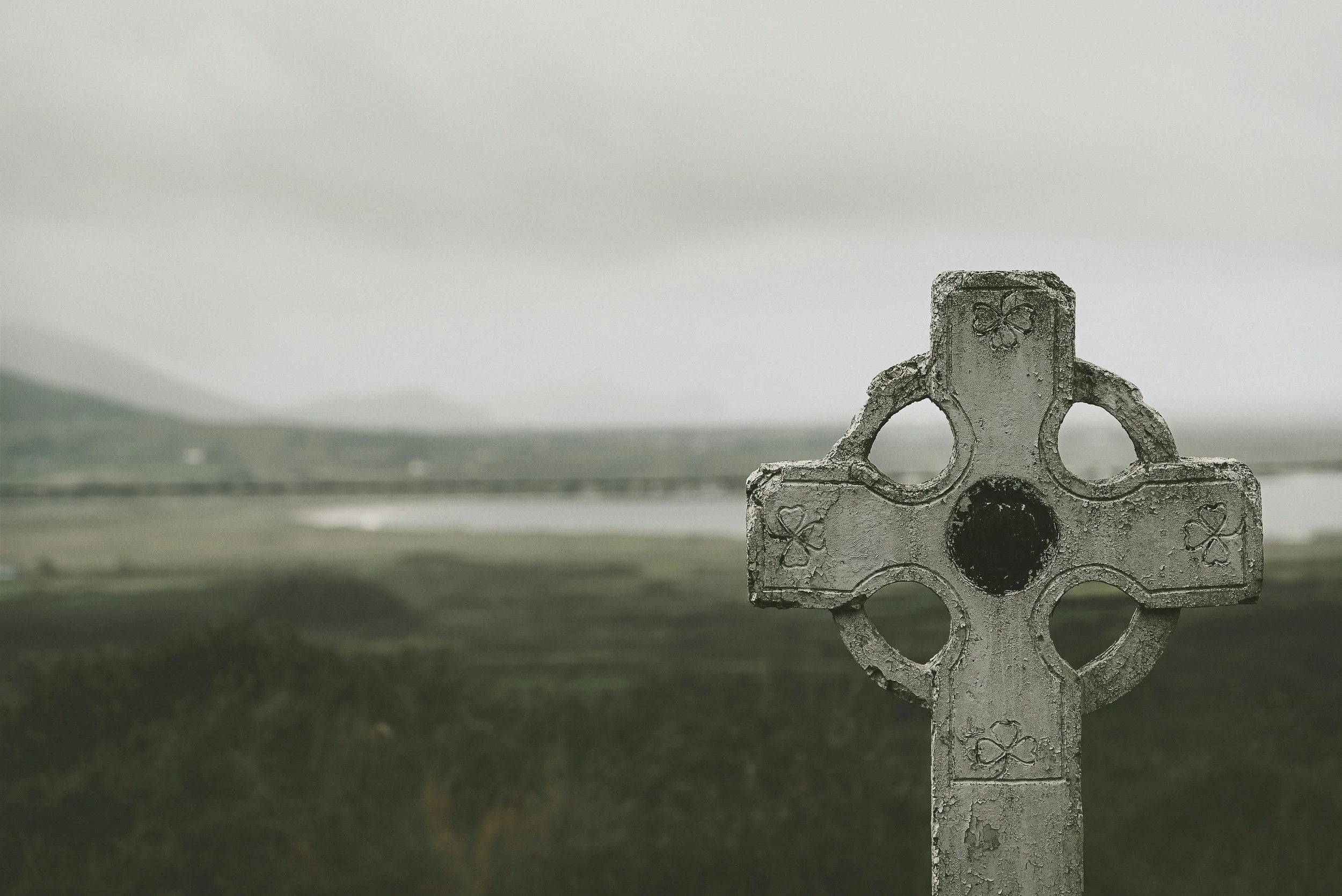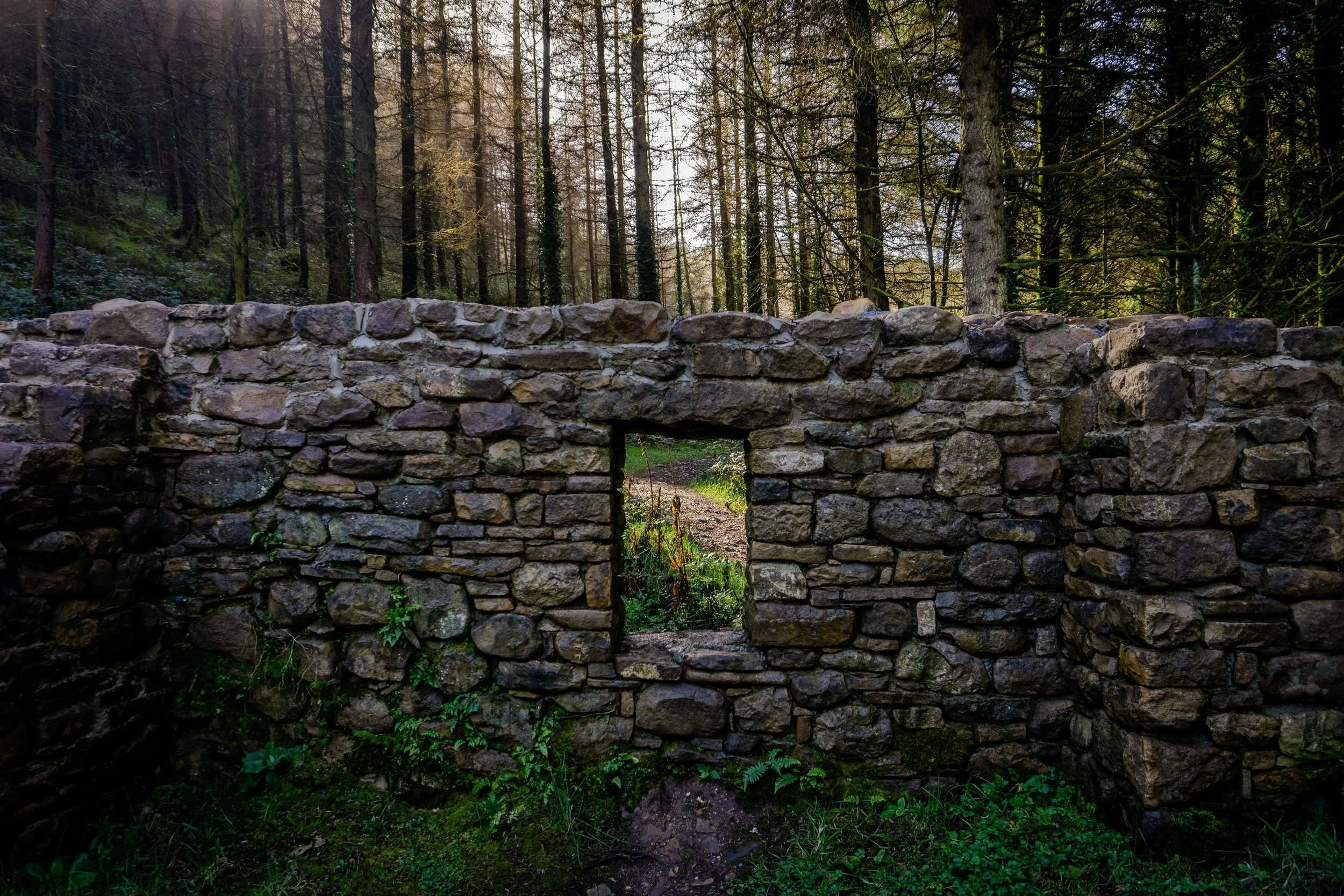Samhain and the Otherworld
The Great Celtic Doorway
Samhain marks one of the two great doorways of the Celtic year that, for the Celts, divided the year into two seasons, the light and the dark – Bealtaine and Samhain. Some believe that Samhain is the most important festival, marking the beginning of a new cycle, a new year. The Celts counted time, not by days but by night, and that the Celtic day began on the preceding night. This idea is hinted at when we say ‘fortnightly’ in Ireland and Europe, which means two weeks, 14 days (or 14 nights). The Celtic day began at night, and the new year started in darkness, for it is understood that the whisperings of new beginnings come in dark silence. These threshold times are liminal times. Dusk and dawn, night and daylight. So, we are now on the threshold of that transition into the darkness.
“The doors to the world of the wild self are few but precious. If you have an old, old story, that is a door. If you love the sky and the water so much you almost cannot bear it, that is a door. If you yearn for a deeper life, a full life, a sane life, that is a door.”
Clarissa Pinkola Estes
The Cailleach
At Samhain, the final berry and nut have been gathered, and the harvest of the earth’s fruit is complete. Vegetation sinks back into the earth and decays beneath the surface. The Cailleach rules at this time. Cailleach means “old crone”, “witch”, or “old hag”. The Cailleach knows all about the darkness and night. This is her time. The winter solstice, the space between Death/Samhain and Life/Imbolc, is the realm of the Cailleach. This is where the soul awaits rebirth, the interplay between darkness and light. It is said that there are three great ages: the age of the yew tree, the age of the eagle, and the age of the Cailleach.
She is the dark mother who presides over the Otherworld, the realm of receptivity and imagination. She nurtures the womb of the earth, for after a period of rest and regeneration, the light will be reborn out of its darkness at Imbolc. The Old Woman is an archetype, a potential, and that potential is realized differently in native traditions around the world. Celtic mythology has no myth which explains the creation of the cosmos, but the Cailleach is the creator and shaper of the land—the ground at our feet. Everything, then, begins with her. She holds that beautiful crone wisdom, the accumulated wisdom and strength.
We need to call on her at our threshold moments. This bean feasa, the wise woman, knows the language of the darkness and the language of transformation.
Samhain and the Otherworld
Samhain is a time of rest for the land and the people. It was the most supernaturally changed time in the traditional Irish year. It was when the Faeries and the Si roamed the land and the ghosts of the dead returned to their old homes. At Samhain, a seat was kept free by the fire for them. Side, plural of the Irish word Si, means a hill, mountain or mound inhabited by supernatural beings.
The gates of the otherworld were open during Samhain, making it a dangerous supernatural time. Our ancestors protected themselves from that other world through fire.
The Otherworld in Irish cosmology was not experienced as an eternal afterlife but a parallel world. The Celtic idea is that the only barrier between ourselves and the otherworld is perception. The otherworld is always here, alongside us, but invisible. Samhain is the time of year when the veil is thinnest between those two worlds. Threshold or liminal times in our lives are always charged with energy. It is an in-between time, where it has to come to fruition within us, has yet to emerge, and we are no longer where we were. We are in between. With our ancient ancestors, this in-between time, the unseen and seen worlds collided. Interestingly, this was a step out of the normal, and a sense of chaos in the masked goblins and ghosts that roam the earth is akin to the chaos we feel too at times of change and transition. A turmoil ensues, which is how change can come about.
The Adventures of Nera - The Return from the Otherworld
The Adventures of Nera is an ancient Irish Myth. In this story, Nera goes into the Side, at Samhain, and spends a number of days there. On his return, in order to prove he has been there, he brings back with him the plants that are not usually found in November but are found in May. He returns with the ‘fruits of Summer’ - “torthe samhraid”.
So the story goes:
“How will it be believed that I have gone into the Sid?” asked Nera.
“Bring the fruits of Summer (toirthe samraid) with you.” said the woman.
So he brought wild garlic with him, as well as primroses and buttercups.
- (The Adventures of Nera).
The first syllable, “Sam,” in the Irish word “Samhain,” is the same as in the Irish word for Summer, “Samhradh.” So, scholars think the Bealtaine and Samhain festivals were connected—six months apart, Bealtaine being a mirror of the Samhain festival.
Sowing the Seeds
What is beautiful about this is that in the darkness, at Samhain, we sow the seeds that come to Imbolc and Bealtaine, symbolically bearing fruit. This is a beautiful analogy for growth and transformation. It is through the dark night of the soul that our personality and new aspects of ourselves are revealed to us.
So, as we are about to enter the darkness at Samhain and cross that threshold, it is an invitation to reflect on what needs to die away in our lives. What do we need to let go of? What do we need to sit with? To allow incubation?
Join me, for the Cailleach’s Descent into the Underworld.
We will explore the grief we experience during transition periods. Grief is a constant companion with change. So, to heal the patterns that no longer serve us, we need to meet the grief inherent in that transition. We can acknowledge that those old patterns kept us safe when needed, but it is time to make space for a new way of life. We will cross the thresholds of change and learn, through the wisdom of the ancient Crone - The Cailleach, how we can support ourselves in the liminal places.



